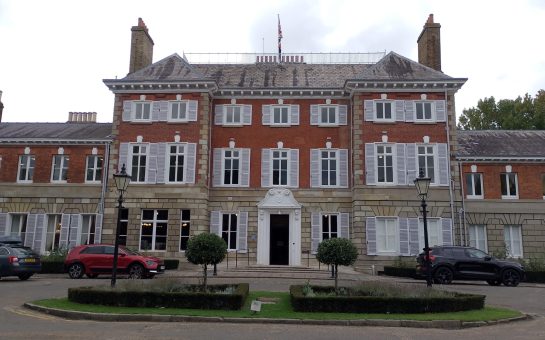The boroughs with the highest life expectancies are amongst the wealthiest in London, a study has revealed.
The study, by NowPatient, revealed that ten of the top 20 areas of the UK with the highest life expectancy are affluent boroughs of London.
Kensington and Chelsea, Westminster, Camden, and Richmond take the top four spots, all revealing average life expectancies of over 84 years of age, with the national average sitting at around 80 years old.
NowPatient calculated the average life expectancies of local authorities in the UK, using data from the Office for National Statistics (ONS), which can also be used to reveal the areas of the UK with the lowest life expectancies, including Glasgow, Burnley, and Manchester.
Claire Diamond, Communications Manager at Impact on Urban Health said: “The discrepancy in life expectancy across the UK is a reflection of the inequalities in health that we can see though our work in South London.
“More than one in five (23%) people in the most deprived places in Lambeth live with multiple long-term health conditions, compared to only one in ten (11%) in the least deprived neighbourhoods.
“Where we live and work has a huge impact on our health. People who are living on lower incomes are more likely to live in badly maintained and insecure housing, working jobs that have a greater health impact, with less time and resources to improve or maintain their mental and physical wellbeing.
“The stress caused by financial challenges – sometimes leading to evictions and bankruptcy – has direct and potentially long-lasting effects on health and is linked to risk factors for chronic illness like high blood pressure and poor sleep.
“For many, this creates a cycle of poor mental, physical, and financial health that is incredibly difficult to escape. This means that those worst hit by any increase to the cost of living are at the bottom of the income spectrum as well as the worst off in health.”
GDHI
Looking at the NowPatient table, the top four areas are known to be affluent areas of London, and this can be corroborated with the Gross Disposable Household Income (GDHI) rates in each area.
There is a strong correlation between London boroughs with a high average life expectancy, and London boroughs with the highest GDHI.
ONS data on GDHI income per head for UK local authorities in 2022 shows a stark polarity between the areas at the top of the life expectancy table, and those at the bottom.
The graph shows the local authorities with the highest and lowest life expectancies, along with the GDHI for each authority.
There is a clear trend showing the residents of authorities with the lowest incomes having the lowest life expectancies, and the residents of authorities with the highest incomes having the highest life expectancies.
Senior Fellow at King’s Fund, Veena Raleigh, explained that how long you can expect to live in England is strongly correlated with levels of socio-economic deprivation.
She said: “Life expectancy is almost a decade shorter in the most deprived areas compared with the least deprived areas.
“The gap in healthy life expectancy (ie: years spent in good general health) is even longer, almost two decades. The pandemic has accelerated this health divide, as its impact was greatest on deprived communities.
“London as a whole had the highest life expectancy of all English regions. However, even in London, life expectancy varies by deprivation with some deprived boroughs such as Hackney, Barking and Dagenham being closer to Blackpool than more affluent London boroughs.”
Using the ONS health life expectancy data, research by health think-tank King’s Fund found that in 2018-20, life expectancy for males was almost nine years lower and for females almost eight years lower, in Blackpool, Middlesbrough, Manchester and Liverpool than in Westminster, Camden, and Kensington and Chelsea.
Average wage income
The evidence is further illustrated when looking at average wage income.
According to ONS average yearly wage data, in 2022, Kensington and Chelsea ranked as the richest borough in London, with the average wages earned by residents being £73,917.
Westminster is second, with the mean wages adding up to £59,674.
Richmond upon Thames makes the list as the fifth richest London borough, with the average wage being £54,688.
Camden and Kingston upon Thames come in at number eight and nine, with mean incomes of £45,283 and £45,708 respectively.
Once again, an obvious conclusion can be drawn by comparing average incomes and GDHI per area – having more money seems to mean you’ll have a higher life expectancy.
What’s behind the figures?
Factors affecting Gross Disposable Household Income and Life Expectancy are, on the whole, rooted in class polarisation, and generational socio-economic barriers.
These include access to good quality education, access to private healthcare and the north-south country divide.
Access to education
Poverty and inequality charity Trust for London broke down the top GCSE attainments in English and Maths by London borough for 2021/22, with all of the top boroughs also featuring in NowPatient’s list of local authorities with the highest life expectancies.
Kingston and Sutton came out on top, followed by Barnet, Richmond and Kensington and Chelsea. The other boroughs in the top 10 were Redbridge, Westminster, Ealing, Wandsworth, and Harrow.
There is a direct link between access to good quality education and improved life expectancy.
Access to private healthcare
The Nuffield Trust explained the regional differences in accessing private healthcare in their report on the delivery and funding of healthcare in the UK.
The health think tank explained that London and the south of England have ‘a higher proportion of privately funded and provided activity than northern areas’.
The report revealed that 10.5% of care was paid and provided for privately in London, whereas in the North East, North West, Yorkshire and the Midlands regions, fewer than 6% of elective admissions were paid for privately.
The north-south divide in the UK is important to acknowledge, with all four of the areas with the lowest average life expectancies being in the north of the country.
Private healthcare is more routinely accessed in London and southern England, illustrating yet another direct correlation between life expectancy and socioeconomic status.





